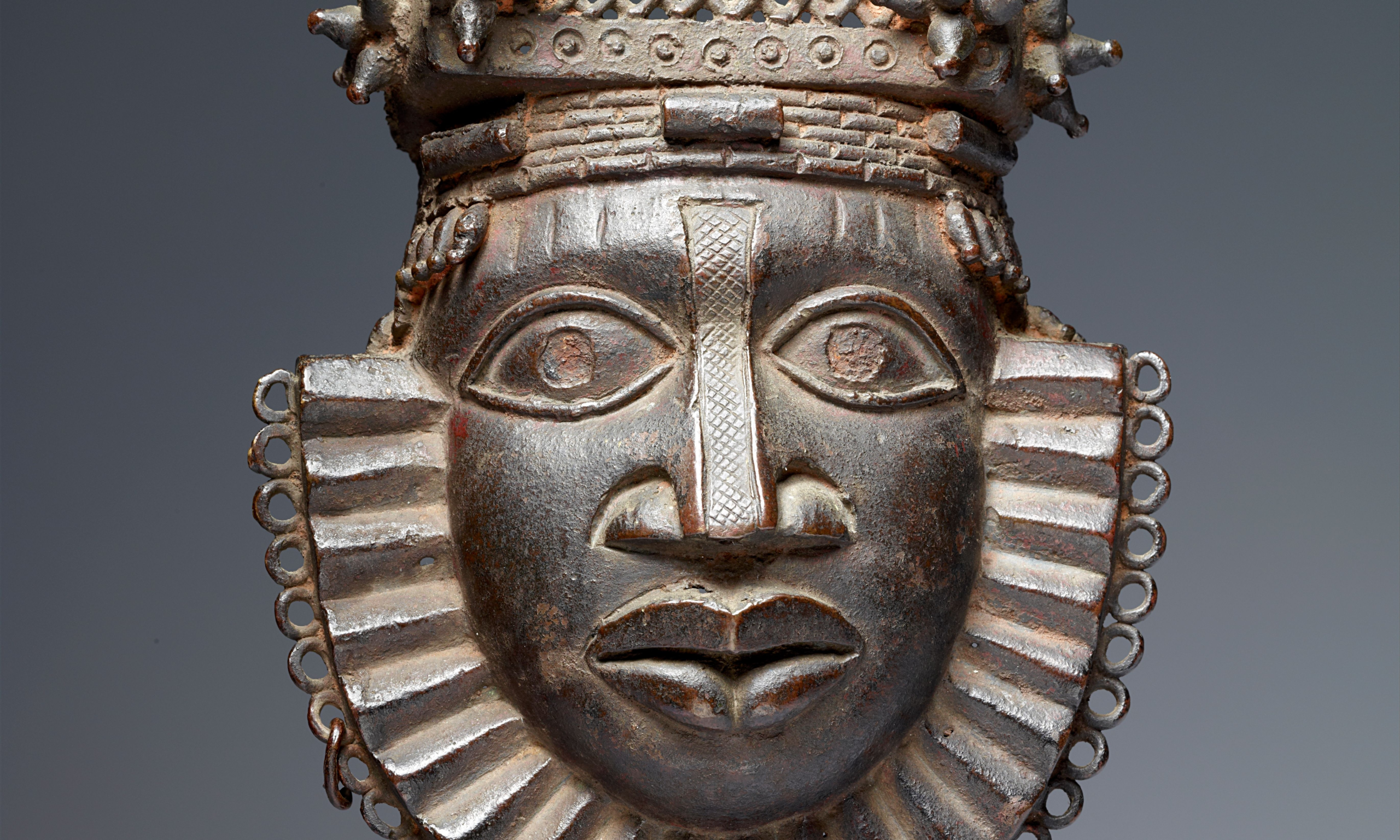Hip mask, Benin Court workshop, Nigeria, Kingdom of Benin, Edo (17th–18th century) © Museum Rietberg, photo: Rainer Wolfsberger
Twenty-one works in Swiss museum collections were looted from Benin City when the Royal Palace was plundered by the British Army in 1897, a new report reveals. The report, published by the Swiss Benin Initiative (SBI) group, focused on 96 Benin bronze items in eight museums including the Musée d'ethnographie de la Ville de Genève and the Museum der Kulturen Basel.
The Swiss Benin Initiative was launched in June 2021 when the participating Swiss museums joined forces under the leadership of Zurich’s Rietberg Museum. An SBI statement says: “In addition to creating an effective network among the participant museums, the primary focus was on the collaboration and exchange of information with Nigeria for the purpose of investigating the provenances of the collections from the Kingdom of Benin held by the said museums in Switzerland.”
Switzerland is the latest country to shine a light on the artefacts looted by the British army from what is now southern Nigeria as part of a punitive expedition (“Benin bronzes” includes objects not only made of bronze but brass and ivory too). Since the 1960s, Nigeria has repeatedly called for their repatriation.
The new SBI report, published on 2 February, outlines how “21 objects [out of 96] belong to category one [looted] which corresponds to 22% of the Swiss Benin holdings. In these cases, records in writing or circumstantial evidence such as burn marks provide a direct link to the fateful events of 1897.”
Category two, “probably looted” includes a total of 32 Benin objects (34%). “In these cases, we have no written evidence to link them directly to 1897,” the SBI says though it “may assume with considerable certainty that they were violently appropriated in 1897”.
Crucially, items listed in categories one and two may be returned to Nigeria. “In the document, the museums concerned express their openness to a transfer of ownership of the looted and probably looted objects; this could involve a repatriation of the works, a circulation or loans to Swiss museums,” says an SBI statement.
The collection of the Museum Rietberg includes 16 artefacts from the Kingdom of Benin; three items show evidence of a direct link with the Benin military operation of 1897 including a brass hip pendant mask inscribed with the inventory number of William D. Webster. According to the Museum Rietberg website, Webster, a London dealer in ethnographic antiquities, was responsible for the sale of seized Benin artefacts on behalf of the British colonial administration.
Meanwhile, research showed that the remaining 16 and 27 objects probably are not or definitely are not connected with the military operation of 1897.
The research also shows that only eight objects were acquired by the Basel Museum der Kulturen immediately after 1897, while the majority of items entered Swiss museums later over a longer period of time up until 2022. “In this context, private collectors along with the international and Swiss art markets played a pivotal role,” the SBI says.
The SBI says its approach was new as the project not only relied on Western archives and records, but equally incorporated the Nigerian perspective regarding the history of the Benin objects. “For this purpose, the SBI team and the anthropologist Dr Alice Hertzog worked closely with the Nigerian historian Dr Enibokun Uzébu-Imarghiagbe, who looked into the oral history side of the objects in question and conducted interviews with local experts from academia, museums, palace associations, and artisan guilds,” its statement adds.

